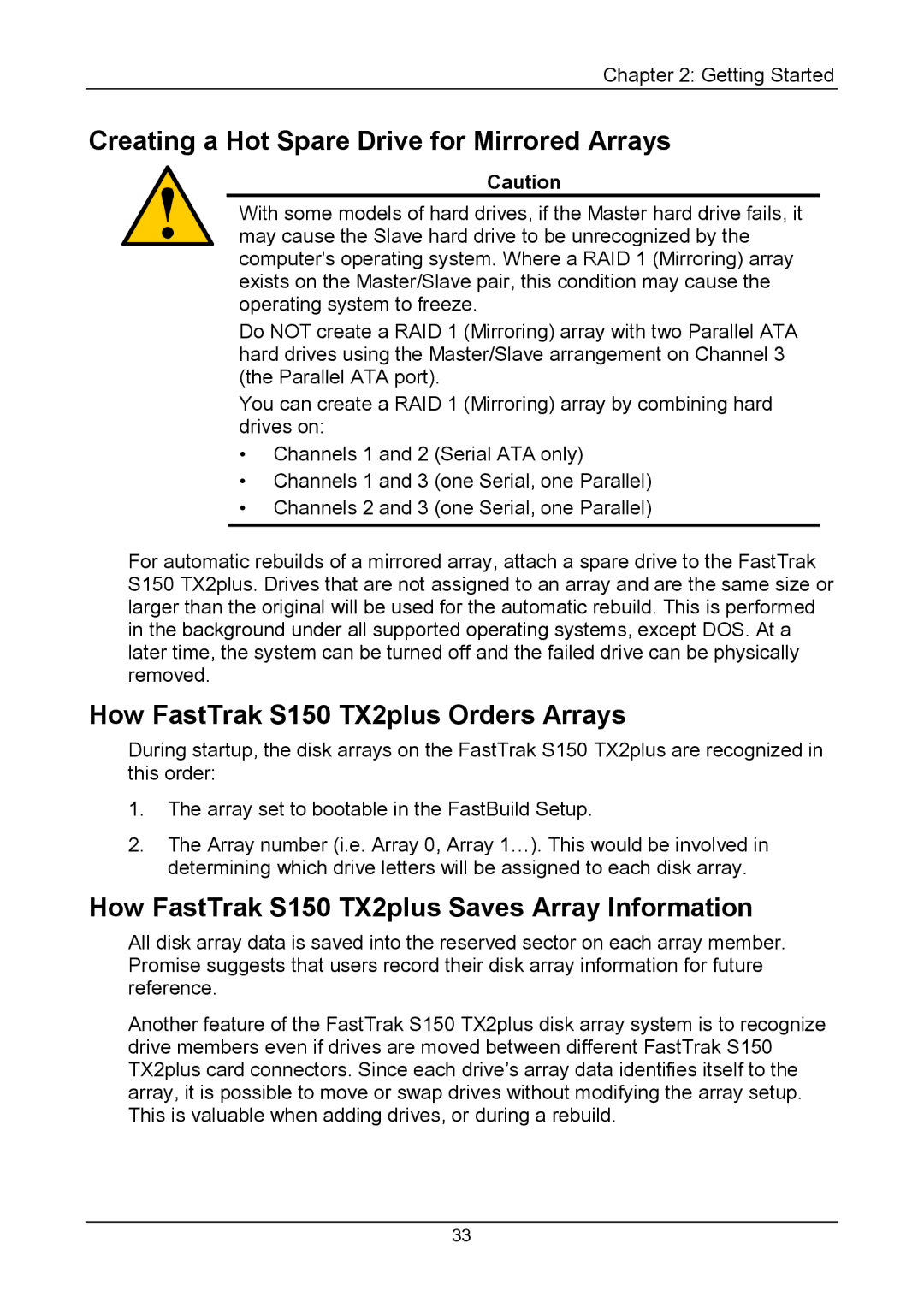
Chapter 2: Getting Started
Creating a Hot Spare Drive for Mirrored Arrays
Caution
With some models of hard drives, if the Master hard drive fails, it may cause the Slave hard drive to be unrecognized by the computer's operating system. Where a RAID 1 (Mirroring) array exists on the Master/Slave pair, this condition may cause the operating system to freeze.
Do NOT create a RAID 1 (Mirroring) array with two Parallel ATA hard drives using the Master/Slave arrangement on Channel 3 (the Parallel ATA port).
You can create a RAID 1 (Mirroring) array by combining hard drives on:
•Channels 1 and 2 (Serial ATA only)
•Channels 1 and 3 (one Serial, one Parallel)
•Channels 2 and 3 (one Serial, one Parallel)
For automatic rebuilds of a mirrored array, attach a spare drive to the FastTrak S150 TX2plus. Drives that are not assigned to an array and are the same size or larger than the original will be used for the automatic rebuild. This is performed in the background under all supported operating systems, except DOS. At a later time, the system can be turned off and the failed drive can be physically removed.
How FastTrak S150 TX2plus Orders Arrays
During startup, the disk arrays on the FastTrak S150 TX2plus are recognized in this order:
1.The array set to bootable in the FastBuild Setup.
2.The Array number (i.e. Array 0, Array 1…). This would be involved in determining which drive letters will be assigned to each disk array.
How FastTrak S150 TX2plus Saves Array Information
All disk array data is saved into the reserved sector on each array member. Promise suggests that users record their disk array information for future reference.
Another feature of the FastTrak S150 TX2plus disk array system is to recognize drive members even if drives are moved between different FastTrak S150 TX2plus card connectors. Since each drive’s array data identifies itself to the array, it is possible to move or swap drives without modifying the array setup. This is valuable when adding drives, or during a rebuild.
33
